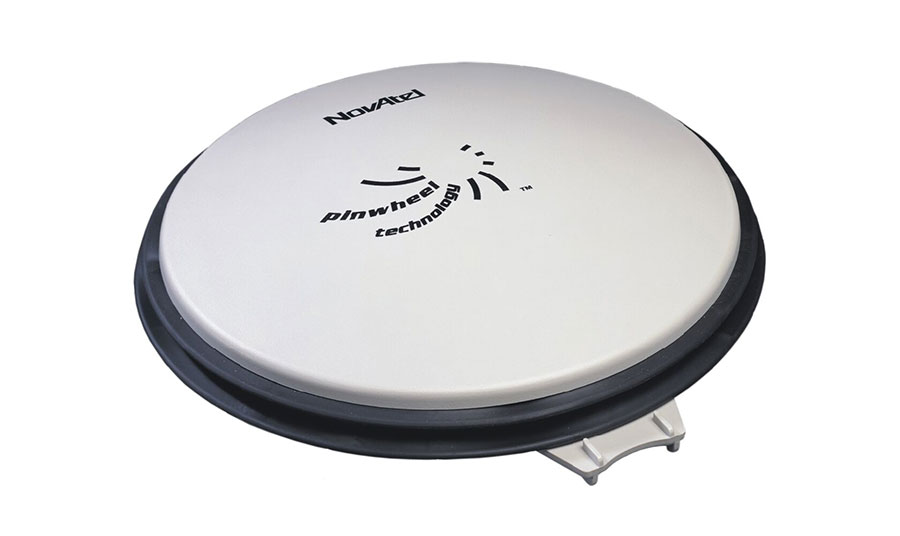Suppliers
Add your company
Precise GNSS & GPS Positioning Solutions for the Toughest Marine & Maritime Environments
If you design, build or supply GNSS Antennas, create a profile to showcase your capabilities on this page
Products
GNSS/GPS Antennas for Marine & Maritime Applications
GNSS antennas, when connected to GNSS receivers, enable precise satellite-based navigation and positioning for maritime safety, offshore operations, scientific exploration, and dynamic vessel control. Designed to operate in extreme ocean environments, marine GNSS antennas play a vital role in maintaining signal integrity in the presence of interference, multipath reflections, and harsh weather conditions.
This category encompasses various GNSS antenna solutions for different vessel types and mission profiles. These include standalone antennas, integrated antenna-receiver modules, active and passive configurations, and models that support multiple satellite constellations such as GPS, GLONASS, Galileo, and BeiDou.
Types of GNSS Antennas for Marine Use
Passive GNSS Antennas
Passive GNSS antennas receive satellite signals but do not amplify them. They rely on the receiver for signal processing and amplification. These are typically used in applications where cable lengths are short, signal loss is minimal, and external interference is limited.
- Use Case: Small boats, drones, and short-range marine monitoring systems
- Advantages: Low cost, low power consumption, simple design
Active GNSS Antennas
Active GNSS antennas include a built-in Low Noise Amplifier (LNA) to strengthen weak satellite signals before transmission to the receiver. They are essential when long coaxial cables introduce significant signal attenuation.
- Use Case: Commercial vessels, offshore platforms, scientific buoys, autonomous surface vehicles
- Advantages: Improved signal quality over long distances, enhanced interference mitigation
GNSS Antenna-Receiver Modules (Smart antennas)
Integrated modules combine a GNSS antenna and receiver into a single housing. These “smart” antennas simplify installation and reduce the number of external components required, making them well suited for applications where space and cabling must be minimized.
- Use Case: Autonomous marine vehicles, modular ocean sensors, buoy-based systems
- Advantages: Simplified deployment, reduced signal loss, plug-and-play compatibility
Choke Ring Antennas
Choke ring antennas are precision devices that suppress multipath interference, which can degrade positional accuracy. These antennas are often used in scientific and geodetic applications requiring millimeter-level accuracy.
- Use Case: Hydrographic and geodetic surveys, tide gauges, permanent monitoring stations
- Advantages: High positional stability, multipath suppression
Helical and Patch Antennas
Helical antennas provide wide beamwidth and RHCP (Right-Hand Circular Polarization), making them robust in dynamic marine environments. Patch antennas, including ceramic and microstrip designs, are compact and widely used for embedded and lightweight systems.
- Use Case: UAVs, compact buoys, research probes, marine telemetry
- Advantages: Lightweight, high gain, stable polarization
Controlled Reception Pattern Antennas (CRPA)
CRPA systems dynamically adjust the antenna’s reception pattern to suppress interference and jamming. These are mission-critical in defense, security, and autonomous navigation scenarios where reliability is paramount.
- Use Case: Naval vessels, SAR missions, offshore security platforms
- Advantages: Anti-jam capability, direction-of-arrival estimation
Applications of Marine GNSS Antennas
GNSS antennas are deployed across a wide spectrum of maritime applications, each requiring varying levels of performance and environmental resilience:
- Vessel Navigation and Collision Avoidance: Ensures safe operation using GPS/GNSS data fused with AIS and radar systems
- Dynamic Positioning Systems (DPS): Maintains precise vessel location for offshore construction, ROV deployment, and subsea operations
- Hydrographic and Oceanographic Surveys: Supports high-accuracy data collection for seafloor mapping, coastal studies, and marine habitat monitoring
- Autonomous Marine Systems: Powers real-time navigation in unmanned surface vehicles (USVs) and autonomous underwater vehicles (AUVs)
- Offshore Platforms and Buoy Systems: Enables synchronization, positioning, and telemetry for oil, gas, and renewable energy installations
- Port and Docking Operations: Facilitates fleet management and vessel traffic services (VTS) and automated docking procedures in congested harbors
- Search and Rescue (SAR): Enhances location tracking for life-saving missions in adverse environments
Multi-Constellation & Multi-Band Capabilities
Modern GNSS antennas support multiple satellite constellations (GPS, GLONASS, Galileo, BeiDou) and frequency bands (L1, L2, L5) to enhance accuracy, redundancy, and signal reliability. Dual-band and multiband antennas are increasingly adopted in environments with multipath and signal blockage.
Multiband functionality enables GNSS correction services such as Real-Time Kinematic (RTK) and Precise Point Positioning (PPP). These services rely on phase measurements from multiple frequencies to correct for a range of positioning errors, including ionospheric and tropospheric delays, satellite clock and orbit errors, and multipath interference, ultimately enabling centimeter-level positional accuracy. Support for multiband correction services is essential for marine applications that demand high-precision navigation, such as dynamic positioning, hydrographic survey, and autonomous vessel operation.
Key Considerations in GNSS Antenna Selection
When selecting a GNSS antenna for marine applications, several performance and mechanical factors must be evaluated:
- Gain and Sensitivity: High-gain antennas improve signal reception in low-satellite-visibility conditions
- Polarization: GNSS satellites transmit using Right-Hand Circular Polarization (RHCP), and marine GNSS antennas are typically designed to match this polarization to optimize signal reception. While RHCP is preferred, especially in multipath-prone or dynamic environments, some lower-cost or compact antennas may use alternative designs that approximate or compromise on polarization alignment.
- IP Rating and Weatherproofing: IP67 or higher ensures protection from saltwater, humidity, and extreme temperatures
- Mounting Options: Bulkhead, mast, or magnetic mounts should be chosen based on platform requirements
- Material Construction: Use of stainless steel, composites, and corrosion-resistant materials extends antenna lifespan in marine environments
- Interference Suppression: Built-in filters, ground planes, or CRPA technology mitigate jamming and multipath
Integration & Connectivity
Marine GNSS antennas often require specific connector types (SMA, TNC), cable lengths, and compatible NMEA 0183 or NMEA 2000 interfaces. Integrated antennas streamline system integration, especially in distributed sensor networks or constrained deployments.
Relevant Standards
Marine GNSS antennas may adhere to the following standards to ensure reliability and interoperability:
- MIL-STD-810: Environmental engineering considerations for military-grade antennas
- IEC 61108: Maritime navigation and radiocommunication equipment standards
- RTCM 10402.3: Standard for differential GNSS services
- IMO SOLAS: Safety of Life at Sea regulations impacting GNSS usage in commercial shipping
Summary of GNSS Antenna Types & Their Applications
| Antenna Type | Typical Use Case | Key Features |
| Passive GNSS Antenna | Small vessels, UAVs | Low cost, no power required |
| Active GNSS Antenna | Large vessels, offshore systems | Amplified signal, LNA included |
| Smart Antenna Modules | Buoys, compact sensors | Integrated receiver, simplified setup |
| Choke Ring Antenna | Research stations, geodetic platforms | Multipath rejection, high precision |
| Helical Antenna | Autonomous systems, harsh environments | Wide beam, robust signal handling |
| Patch Antenna | Lightweight devices, embedded systems | Compact, flat profile |
| CRPA | Military, anti-jam applications | Adaptive signal reception |











